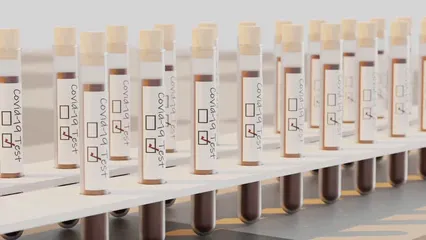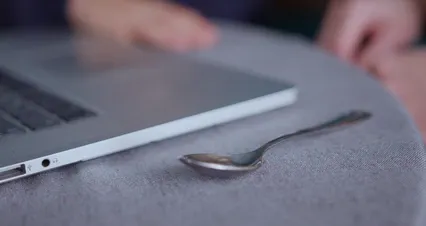
Why Does It Hurt to Swallow? Understanding Painful Swallowing
Introduction
Have you ever felt a sharp pain while swallowing? This common issue is known as odynophagia. It can make eating and drinking uncomfortable. Understanding the reasons behind this pain is crucial. Knowing the causes can help you manage or seek appropriate treatment.
Speaking of comfort, if you’re struggling with throat pain, consider trying throat lozenges. These little wonders can provide quick relief and help you feel normal again while you figure out what’s going on with your throat!
Summary and Overview
Odynophagia refers to pain during swallowing. It differs from dysphagia, which is difficulty swallowing. Symptoms of odynophagia include a burning sensation or discomfort in the throat. Sometimes, it might feel like your throat is tightening. The causes of painful swallowing can range from mild to serious. If you notice persistent pain or worsening symptoms, it’s essential to consult a healthcare professional.
To keep your throat happy, don’t forget to hydrate! A water bottle with infuser can make drinking water more enjoyable. Infuse it with fruits or herbs for a refreshing twist that may help soothe your throat.
Common Causes of Painful Swallowing
Viral Infections
Common colds, flu, and mononucleosis are frequent culprits of throat pain. These viral infections can lead to soreness, making swallowing uncomfortable. Symptoms often include a runny nose, cough, and fatigue. During colder months, these infections are more prevalent, affecting many people.
Bacterial Infections
Strep throat and tonsillitis are significant bacterial infections that lead to painful swallowing. Strep throat is marked by sudden sore throat, fever, and swollen lymph nodes. Tonsillitis can also cause severe pain and discomfort. Diagnosis typically involves throat swabs to confirm the presence of bacteria. Antibiotics are often necessary to treat these infections effectively.
Gastroesophageal Reflux Disease (GERD)
GERD is a common condition where stomach acid backs up into the esophagus. This can lead to painful swallowing. You might experience symptoms like heartburn and a sour taste in your mouth. Heartburn often feels like a burning sensation in the chest. Regurgitation may occur when food or liquid comes back up. To manage GERD, lifestyle changes can make a big difference. Eating smaller meals, avoiding trigger foods, and not lying down after eating can help. Medications like antacids and proton pump inhibitors are also effective treatments.

When tackling GERD, you might also want to keep a digital thermometer handy. Monitoring your temperature can give you peace of mind as you navigate through your symptoms.
Oral Thrush
Oral thrush is a yeast infection in the mouth, often caused by Candida fungus. It can create white patches on the tongue and inside the cheeks. You may also feel a burning sensation while swallowing. Risk factors include a weakened immune system, certain medications, and diabetes. Individuals taking antibiotics or corticosteroids are particularly vulnerable. Treatment typically involves antifungal medications. These can clear the infection and alleviate symptoms.
Other Potential Causes
Esophagitis
Esophagitis is the inflammation of the esophagus. This condition can result in painful swallowing. Allergies, infections, and certain medications can trigger esophagitis. Acid reflux is a common cause, leading to irritation. Symptoms may include chest pain and difficulty swallowing. If you suspect esophagitis, speak with a healthcare provider for diagnosis and treatment options.
Throat Injury
Swallowing sharp foods, like chips, or consuming hot liquids can injure the throat. These injuries can cause significant pain while swallowing. Recovery usually involves time and proper care. Drinking soothing liquids and avoiding irritants can help. Over-the-counter pain relievers may also provide relief. For an extra boost, consider a sore throat relief kit to help ease your discomfort.

Cancer
Though rare, persistent swallowing pain can be a sign of cancer in the throat or esophagus. Early symptoms may include difficulty swallowing and unexplained weight loss. If you notice these signs, it’s crucial to consult a healthcare provider. They can perform evaluations and necessary tests to rule out serious conditions. Early diagnosis is key to effective treatment.
Associated Symptoms
Symptoms of Infection
When swallowing hurts, it often signals an underlying infection. Common symptoms include fever, chills, and swollen lymph nodes. You might also notice a sore throat or a runny nose. These symptoms can help pinpoint the cause of your pain. Recognizing them plays a vital role in getting the right diagnosis.
Fever often indicates your body is fighting an infection. Swollen lymph nodes can suggest your immune system is active. If you experience these symptoms alongside painful swallowing, don’t ignore them. They can guide your healthcare provider in determining the right tests and treatments.
When to Seek Medical Attention
Sometimes, painful swallowing can be serious. Seek immediate medical care if you experience severe pain or difficulty breathing. Other warning signs include drooling, trouble opening your mouth, or swelling in your throat. If you notice these symptoms, don’t wait—act quickly.

If painful swallowing persists for more than a few days, it’s essential to consult a healthcare provider. Ongoing pain can indicate a more serious issue that needs evaluation. Early intervention is key to effective treatment and recovery.
Diagnostic Approaches
Diagnosing the cause of painful swallowing often involves several tests. Common diagnostic methods include endoscopy and a barium swallow. An endoscopy allows doctors to view the esophagus directly. This procedure helps identify potential blockages or inflammation.
A barium swallow test involves drinking a barium solution. This helps to visualize the swallowing process via X-ray. Your healthcare provider may also perform lab tests to detect infections. These diagnostic approaches are crucial for determining the underlying cause of your discomfort.

Treatment Options
Medical Treatments
When it comes to treating painful swallowing, the approach depends on the underlying cause. For bacterial infections, such as strep throat or tonsillitis, antibiotics are often necessary. These medications help eliminate the bacteria and reduce inflammation. Over-the-counter options can also provide symptom relief. Pain relievers like ibuprofen tablets or acetaminophen tablets can ease throat discomfort. Numbing throat sprays or lozenges may help soothe the soreness temporarily. If symptoms persist, it’s crucial to consult a healthcare provider for further evaluation.

Home Remedies
There are several effective home remedies to alleviate throat pain. Gargling with warm salt water is a time-tested method. Mix one teaspoon of salt in a glass of warm water and gargle several times daily. Staying hydrated is vital, so drink plenty of fluids. Warm teas with honey can be especially soothing. Cold treats like ice chips or popsicles can also numb the throat and provide relief. If you want to make your own popsicles, check out these ice pop molds for a fun and delicious way to cool down your throat.
Diet matters too; choose soft, cool foods that are easy to swallow. Avoid spicy or acidic foods, as they may irritate the throat further. Resting your voice can also help reduce strain. And if you’re looking for meal ideas, a soft food cookbook can be a lifesaver!

FAQs
What is odynophagia?
Odynophagia is pain during swallowing. It differs from dysphagia, which is difficulty swallowing. Odynophagia can be a sharp, burning, or aching sensation. It may occur with food, liquids, or even saliva. Understanding this difference helps in identifying the issue.
Can painful swallowing be a sign of COVID-19?
Yes, painful swallowing can be a symptom of COVID-19. Alongside other symptoms like fever and cough, it may occur. If you experience painful swallowing with other COVID-19 signs, consider getting tested. Early detection is important for effective management.
What home treatments can help relieve painful swallowing?
Several home remedies can ease discomfort. Gargling with warm salt water can soothe the throat. Drinking warm fluids, like tea with honey, provides relief. Staying hydrated is crucial, so aim for plenty of fluids. Soft, cool foods may also help ease the pain.
When should I see a doctor for painful swallowing?
Seek medical attention if your pain is severe or persists for more than a few days. Other warning signs include difficulty breathing, drooling, or swelling in your throat. If you notice blood in your saliva, or if symptoms worsen, consult a healthcare provider immediately.
Are there any long-term complications associated with painful swallowing?
Yes, untreated painful swallowing can lead to complications. These may include weight loss due to reduced food intake. Dehydration can also occur if swallowing remains painful. Persistent pain might indicate a more serious underlying condition, so prompt evaluation is important.
Please let us know what you think about our content by leaving a comment down below!
Thank you for reading till here 🙂 And remember, if you’re looking to boost your immune system, vitamin C supplements and probiotic supplements are excellent additions to your routine!
All images from Pexels




